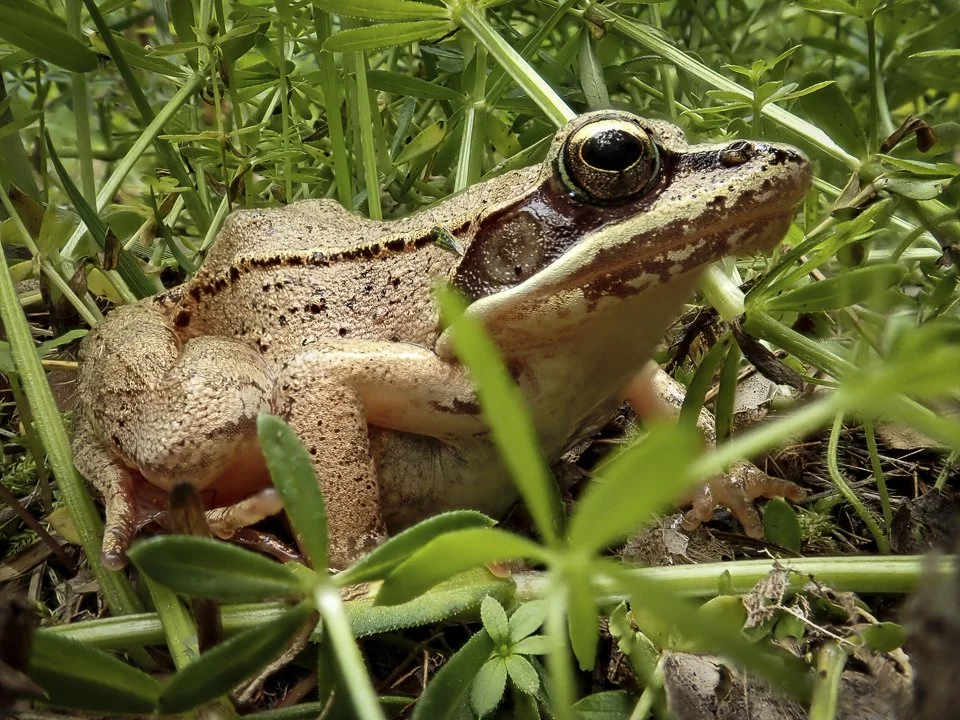Wood Frog (Lithobates Sylvaticus)
Wood frogs are among the first amphibians to emerge in spring, when they make their way to vernal pools to begin breeding. Their mating call sounds like an idling vintage V-8 engine powered by ducks and frequently blends into the background behind the higher-pitched call of the smaller spring peeper. Eggs float in conjoining masses, hatch into tadpoles in about 5 days, and after about 40 days, emerge as juveniles.
Wood frogs prefer mature deciduous forest and are carnivorous, eating spiders, beetles, flies, earthworms, slugs, and snails. Eggs, tadpoles, and frogs are eaten by other species, including aquatic insects, salamanders and newts, other larvae, barred owls, great blue herons, minks, and raccoons.
In fall and winter, as wood frogs enter brumation, they bury themselves just a few inches into the leaf litter, and a special “antifreeze” preserves life, leaving cells and vital organs undamaged, even as the heart and lungs stop functioning and up to 65 percent of body water freezes.
What do you love about this particular creature?
What do they reveal to you about God and our faith?
The first time I heard wood frogs (plus spring peepers!), I was stopped in my tracks, flooded with joy and awe. When I think about how the wood frog’s body literally freezes up every winter, buried under the leaf litter to emerge reanimated in early spring, it reminds me that our God is a God of resurrection and of breathtaking everyday miracles.
Wood frogs teach me that change and metamorphosis are central to life: its form, food, and habitat changing from egg to tadpole to adult. Wood frogs also speak to me about connectivity and reciprocity. In the same way that Jesus teaches us that we are part of the same vine -- roots, branches, fruit, and all -- the wood frog needs connected pools and woodlands to breed and live; plus different species feed on it across all stages of its life cycle, with roughly 70 percent of young being eaten by other species.
Author - Gaen Murphree
Writer Gaen Murphree grew up on the Great Plains and came to Vermont from the West Coast in the late 1990s. She lives in Middlebury, where she and her husband maintain a large vegetable and flower garden, including native plants.
O God, having shown us how far your love goes in saving the lost and forgotten, mercifully grant that we might join you in the work of reuniting with all creatures; through Jesus Christ the Wisdom of Creation, who lives and reigns with you and the Holy Spirit, now and for ever. Amen.
Creation Collect (Proper 19 Year C) from Season of Creation, A Celebration Guide for Episcopal Parishes
